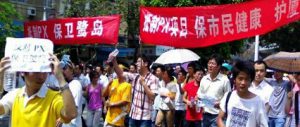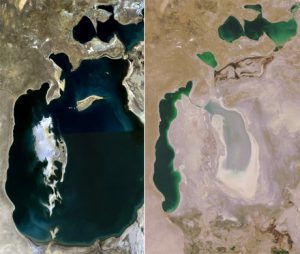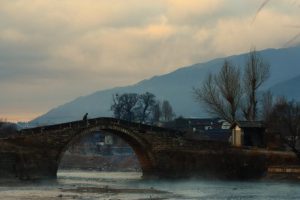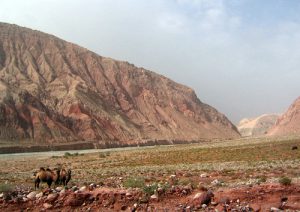The decision to cancel the metal refinery project in Shifang last month after protesters clashed with the police has been widely reported in the Chinese and global media. This is not the first time a project has been shelved due to public demonstrations. The same happened in Xiamen in 2008 and Dalian in 2011.
However, less widely noted internationally was the apparently unprecedented involvement of children and young people in Shifang. Much discussed on the internet, this has not gone unnoticed in the Chinese media. Commenting on this new trend, the Global Times evoked unhappy memories of the Cultural Revolution when young people, as Red Guards, were at the forefront of upheaval and “showed a tendency to violence and cruelty”.
In the past children may not have “rushed to the…protest scene to support a demand made by adults” as reported by the Global Times in Shifang, but in the consultation activities I undertook in Chongqing, a city in south west China, in 2007 and 2008 (published in July by Yale University Press in The End of the Chinese Dream: Why Chinese people fear the future) the concerns of children about the environment – globally and locally – were all too evident. As in the West, children and young people will play a big role in shaping public attitudes to environmental problems in the future and policymakers would be unwise to ignore them.
Wish Trees
Having seen that people in China place their wishes on trees in temples hoping that the wind will blow their prayers to heaven, I wondered if erecting Wish Trees in ordinary neighbourhoods, far from bright lights and big city centres, might find out people’s real concerns. I wanted to go beyond familiar debates in politics, the media or universities. As a visiting professor at a university in Chongqing, I was granted permission to erect Wish Trees in three communities.
These were places in Chongqing, which had undergone big social changes but had no notable history of protests. In two neighbourhoods, large factories had closed, leaving many people without jobs, health care or social welfare. In the other neighbourhood, farmers’ land had been taken for development and they had become nong zhuan fei – farmers who had become city dwellers, without land, given a flat and modest cash compensation of 21,000 yuan (US$3,200).

photo by Gerard Lemos
In one neighbourhood, two classes from the local school were given permission to participate. Local people were asked four questions on the back of a leaf-shaped card: Who are you? What event changed your life? What are your greatest worries? What do you wish for? The children enthusiastically wrote down their answers and jostled with each other to pin them on the Wish Tree and many mentioned their concerns about the environment.
Children’s environmental worries
Children’s awareness of global environmental challenges is growing, partly through education, but also from the internet. An 11-year old girl, who said that the internet had changed her life, went on to say her greatest worry was “natural resources around the globe will be exhausted and the hole in the ozone layer will get bigger.” Drawing attention to the need for public education, another girl of 11 said: “I hope that the community environment improves and that people learn to consciously protect the environment.”
But children’s responses were usually about environmental concerns in their own communities, not distant global phenomena like carbon emissions or climate change. The city of Chongqing is dramatically set where the mountains drop sharply to the confluence of the mighty, muddy Yangtze River and its cleaner, greener tributary, the Jialing. Mountains and rivers are at the heart of the city’s identity and ever-present in children’s imaginations. One child evoked the aspiration for a harmonious society and linked it to familiar surroundings: “I hope we can have a community full of harmony, laughter, happiness and where technology is very advanced and the mountains are green and the rivers beautiful.” At a more local level, another boy said, “I wish the stream outside my house won’t be murky anymore.”
The lived – rather than the imagined – experience of environmental degradation is felt most keenly in air quality and water pollution. Chongqing, at the best of times, is foggy and intensely humid. Air quality is a persistent concern. Respiratory health problems are common, in children as well as adults. One boy, aged 11, said “I wish we could have clean air and fresh water.”
Children learn about – and find out for themselves – the extent of environmental problems. They do not, however, fully understand difficult policy choices. Rapid economic growth is impossible without massive use of carbon-emitting fuels and China is still heavily dependent on coal. Damage to air and water quality, can be mitigated, but is inevitable for the foreseeable future. And climate change brings a new raft of anxieties about water shortages (a historic and persistent problem in China), drought and floods.
Even if they don’t fully understand the ramifications, children sense that the society they are growing up in faces those intractable challenges. Perhaps it’s not so surprising that children’s concerns may turn to protests if they are not listened to and addressed. After all, this is the world they will inherit.
Gerard Lemos is former visiting professor at Chongqing Technology and Business University and former chair of the British Council. His book, The End of the Chinese Dream: Why Chinese people fear the future, is published by Yale University Press.
Homepage image by 好乐无荒






